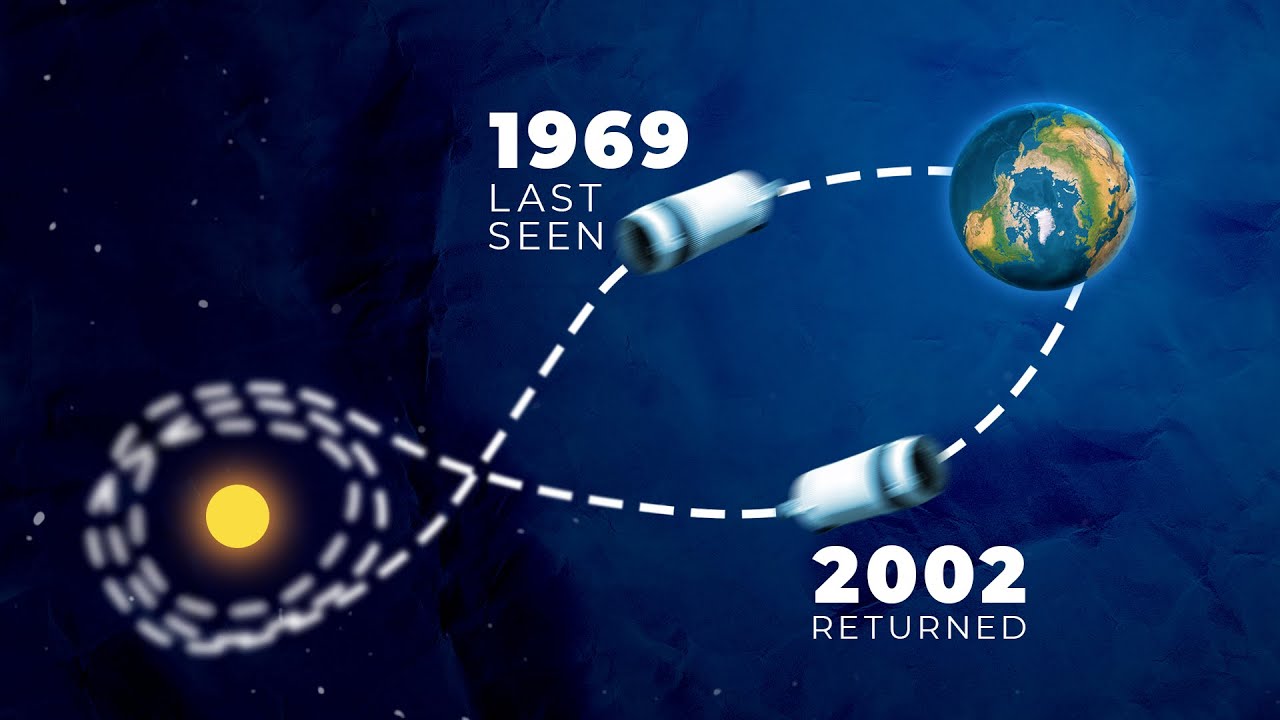When Apollo 12 was launched in November 1969, the mission plan was to dispose of the expended S-IVB third stage of its Saturn V launcher by slingshotting around the Moon to throw it into an orbit around the Sun. A miscalculation of the burn intended to place the S-IVB onto this trajectory resulted in its passing farther than intended from the Moon, failing to escape Earth’s gravity, and going into an elliptical orbit around the Earth. Everybody promptly forgot it.
In September 2002, an amateur astronomer discovered an object near the Earth which was given the temporary asteroid designation J002E3. Further observations established that it was actually in orbit around the Earth, and that the orbit was unstable, indicating it must have been captured from a heliocentric orbit by interacting with the gravity of the Earth and Moon. Back-calculating its orbit indicated it previously left Earth orbit in 1971, and spectrographic analysis showed its reflection matched that of the titanium dioxide paint used on the Saturn V. It was identified as Apollo 12’s S-IVB, returning after orbiting the Sun for more than three decades.
As the orbit was unstable, J002E3 was believed to have escaped Earth’s orbit in June 2003 and is now in solar orbit, but may return to Earth orbit sometime in the 2040s. The rocket stage will probably eventually collide with the Earth or Moon sometime in the next few million years, unless SpaceX sends out a Starship when it comes back in the 2040s and brings it back as a trophy for a museum.
